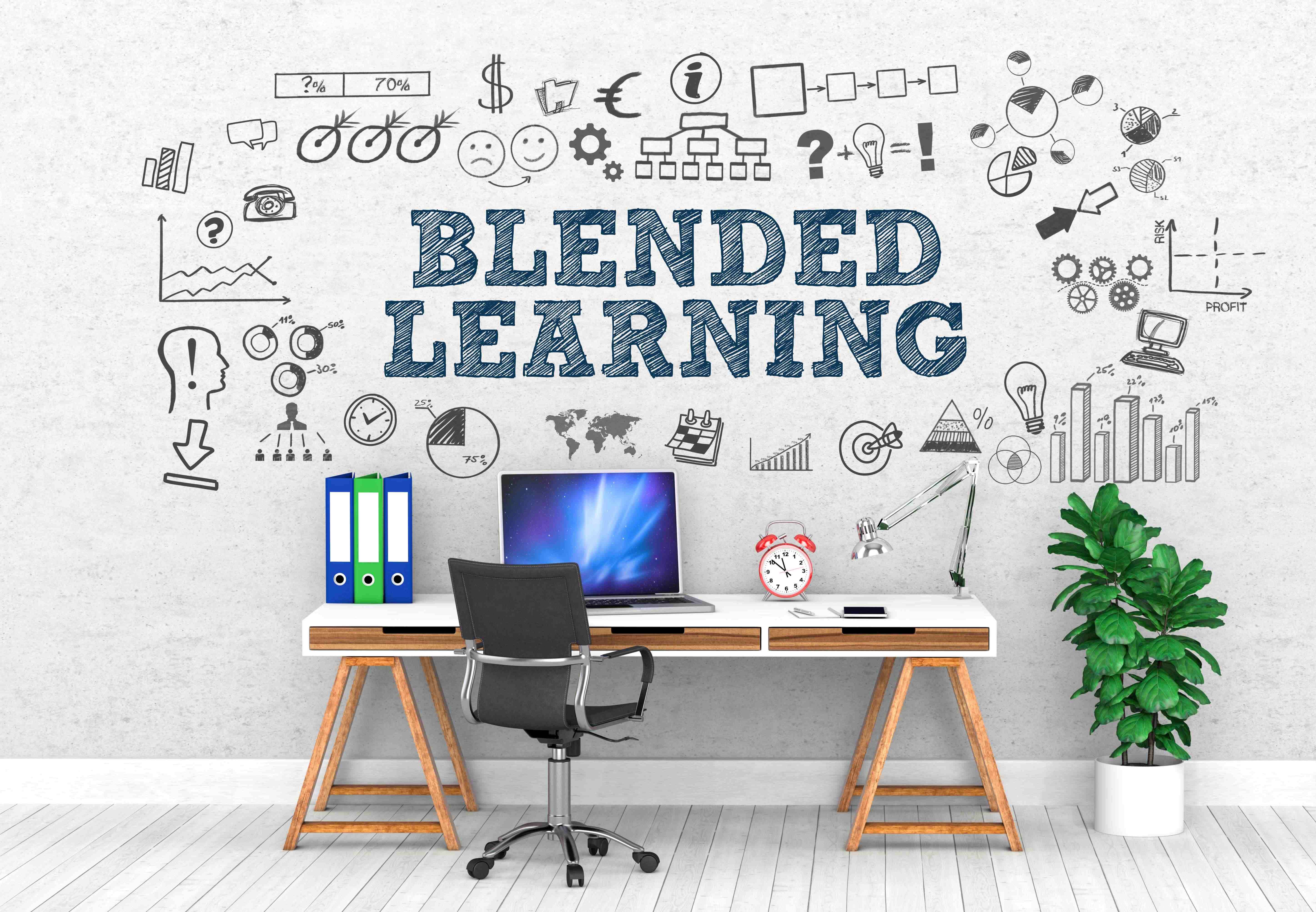Around 17.3% of students in higher education in the UK have disclosed a disability or around 332,300 individuals. The most common disabilities are specific learning difficulties (SpLD), such as dyspraxia, dyscalculia, dyslexia, mental health conditions, and physical impairments and mobility issues. This is why accessibility in eLearning is crucial to consider—almost a quarter of all students risk being shut out from the benefits that digital education can offer if we ignore their needs and build an inclusive learning environment.
This guide looks closely at precisely why accessibility in eLearning is a vital consideration for designers, developers, educators, and members of the faculty before going into detail on how to make eLearning accessible within the higher education environment.
Alongside this, we’ll offer a robust eLearning accessibility checklist, meaning that you can be confident that you’re catering towards the inclusive learning needs of students across the globe.
Why Accessibility in eLearning is Vital
When it comes to digital education, accessibility to eLearning products is one of the most vital considerations to make. It’s no longer a “nice to have” but a “must-have” requirement, with people with disabilities requiring the same access to educational content as their peers.
In many nations, it’s a legal requirement to provide equal access to educational materials, with Disability Rights laws such as the Individuals with Disabilities Education Act prohibiting discrimination of any form in the school system.
Foregrounding accessibility in eLearning discussions means there’s a real potential for emerging technologies to begin overcoming the geographic, socioeconomic, and demographic divides in traditional forms of higher education.
Ensuring that your online courses and educational content are based on the tenets of inclusive learning means that they’ll be flexible and convenient for all students, allowing them to study from home in the case of mobility challenges instead of having to commute to an inaccessible classroom environment. This also enables those students who do not wish to disclose their disability the opportunity to engage with their fellow students in a more comfortable environment.
At the same time, providing better audio and visual quality means that students with hearing and visual impairments can reach a high level of attainment, too.
Meanwhile, asynchronous eLearning tools, such as interactive simulations, pre-recorded videos, and course discussion boards, allow those learners who need to return to information repeatedly the ability to learn according to their own preferences, increasing the likelihood of them succeeding and achieving high marks in their coursework or examinations.
Promoting inclusivity for all students, regardless of their background, is of central concern to those designing and developing the latest eLearning platforms. An inclusive learning environment not only benefits people with disabilities, but a focus on user-friendliness and ease of access leads to a more engaging and effective learning experience for all students.
It’s clear that more work needs to be done, with 60% of educators over the course of the COVID-19 pandemic highlighting that students with visual impairments—as well as those with low vision—were unable to access one or more of the digital tools they need to use to complete classwork.
How to Make eLearning Accessible in Higher Education
So, now that we’ve understood why accessibility in eLearning is a crucial consideration for all students, we can answer the question of how to make eLearning accessible in higher education.
You can follow a handful of strategies to ensure that you’re achieving this as an eLearning designer or developer, which we’ll detail in the following section.
1. All Educational Systems Must be Accessible
It’s not much use making your educational content accessible if the systems used to access those materials are difficult to navigate with a screen reader, responsive braille display, or high-contrast screen settings.
The World Wide Web Consortium has authored several guides as part of their Web Accessibility Initiative (WAI), providing developers and designers with the tools and techniques they need to create internet-based platforms which are properly designed and coded to allow people with disabilities to use them.
At the same time, free services exist, such as Accessibility Checker, which allows web creators to scan their sites and ensure compliance with various nations’ legislation around inclusivity and discrimination.
2. Offer Captioning for Video and Audio Content
Options abound for the transcription and captioning of video and audio content in the eLearning space, such as Amberscript, which allows educators to contribute to the inclusive learning environment by providing subtitles and audio descriptions of live and pre-recorded content and presentations.
This not only benefits those students with visual impairments but ensures that learners who prefer to read content are catered for, too. These services also support the education of non-native English speakers and those who might find it a challenge to understand spoken language by providing a backup when they aren’t able to understand a lecturer or instructor.
3. Design Accessible Documents
When producing educational materials, educators should utilise accessible document formats such as PDFs to ensure that they follow the correct structure, provide alternative text for images for students using screen readers, and ensure that students can easily navigate all course content.
Ensure that all web-based content leverages the uniform and hierarchical headings that HTML provides, such as using an H1 once on the page for the title, and moving through H2 elements and H3 elements for subtitles, ensuring that learners with visual impairments can navigate the page effectively.
At the same time, you should be writing in plain, clear, and concise language, avoiding complex sentence structures and unnecessary jargon, enabling students with cognitive disabilities and those whose first language is not English to understand the course content more easily.
4. Provide Alternative Formats Where Necessary
If you’re only providing course materials in one format, you’re unnecessarily restricting your content to students who can engage with that format. As a result, you should be ensuring that all content is available in multiple formats—providing the full transcript for videos and presentations, or audio versions of written content, for instance.
By providing multimedia content in this way, you can improve accessibility in eLearning whilst not adding much to the workload of educators or content coordinators since they’re already likely to have scripts or written notes for their presentations and videos.
5. Utilise Accessible Communication Tools to Keep in Touch with Learners
One of the great aspects of eLearning is that students can communicate with one another, building collaboration skills as they solve complex problems together—a crucial skill to develop for the modern workplace.
When designing an inclusive learning environment, it’s prudent to ensure that you’re incorporating screen reader-compatible chat platforms and video-conferencing software that can provide real-time captioning of conversation, which will ensure that students from any background can engage with and learn from their peers in group-based tasks and class discussions.
When aiming for accessibility in eLearning products, it’s always vital to ensure that you’re following the best practices in inclusive instructional design, creating engaging learning experiences for all students. Ensure that navigation is clear and consistent from module to module and course to course, and moreover, ensure that the content is organised and placed on the system logically.
At the same time, it’s important to ensure that staff and faculty are provided with guidance on the best practices in inclusive education. Offer training and resources where necessary to help them implement guidelines for inclusivity in the courses and materials they produce, whether encouraging them to attend workshops and tutorials or providing access to accessibility specialists who can offer detailed, bespoke support for unique challenges
Finally, it’s important to commit to regularly evaluating and updating the accessibility of your inclusive learning environment. Changes made should be based on the continuous monitoring and analysis of user data and feedback from students and educators via audits and surveys. This will help to ensure that your content remains accessible and high-quality well into the future.

eLearning Accessibility Checklist
We’ve provided you with a handy eLearning Accessibility Checklist to ensure that all your content and systems contribute to a comprehensive, inclusive eLearning platform.
General Considerations for Accessibility in eLearning
- Is an Accessibility Policy in place clearly outlining your commitment to accessibility in eLearning?
- Are you adhering to the relevant accessibility standards set out by local and international guidelines and laws?
- Is your inclusive learning environment accessible for those using assistive technologies and keyboard navigation?
- Is the colour and contrast of your platform suitable for those who struggle to engage with low-contrast materials?
- Have you provided a way for faculty, educators, and students to be trained and to provide detailed feedback where necessary?
- Have you involved students with disabilities in testing your platform to identify and address the barriers that stand between them and attainment?
- Have you included accessibility statements on your eLearning platform, and will you maintain records of any audits and improvements carried out?
Content Creation
Text Content
- Does your text use clear and concise language?
- Is alt-text provided for all images and transcripts, or are closed captions provided for presentations and videos?
- Have you utilised the proper heading structure for webpages, with H1s for titles, followed by H2s, H3s, and H4s for subtitles?
- Have you avoided the use of jargon and acronyms without explanation?
Multimedia
- Are audio descriptions and alt-text provided for all multimedia that leverages visual elements?
- Have you ensured that video and multimedia content is playable and navigable with a screen reader?
Documents
- Have you utilised an accessible document format, such as a well-structured and correctly set-up PDF?
- Do you have alternative versions for these PDFs, using audio or visuals instead of text?
Interactive Elements and Assessments
Interactive Elements
- Are all buttons, links, and forms clearly marked up with labels, making them accessible to those using screen readers?
- Have you incorporated keyboard focus indicators?
Assessments
- Have you ensured that your assessments are following the best practices for accessibility in eLearning, such as allowing for extended time or alternative question types?
- Have these accommodations been clearly communicated to students with disabilities?
Course Design
Layout
- Is all course content laid out and structured logically, with a clear hierarchy of information?
- Are all navigation menus and layouts consistent across multiple modules and courses?
Flexibility
- Do you allow students flexibility in accessing and engaging with the content on your eLearning platform, with alternative course materials and downloadables in multiple formats?

Key Takeaways
The importance of accessibility in eLearning for higher education can’t be overstated. With a significant portion of students disclosing disabilities, it’s clear that providing an inclusive learning environment is not just an ethical concern but a legal one too, as mandated by disability rights laws.
Accessibility not only bridges geographic and socioeconomic divides but also empowers students to learn at their own pace and in comfortable settings, fostering better engagement and achievement.
The strategies outlined in this guide, from designing accessible documents to ensuring that communication tools are able to be effectively used by those with screen readers, serve as a comprehensive roadmap for ensuring that accessibility in eLearning is at the forefront of your design and development process for any platform.
A continuous commitment to monitoring, feedback, and improvement ensures that all institutions can uphold their promise of equal opportunities for all students, creating a brighter and more inclusive future for digital education.
Empower Your Inclusive Learning Environment
At Instinct, we’re experts in recruiting specialists focused on accessibility in eLearning, ensuring that only the very best talent drives your inclusive learning environment initiatives. Our consultants are committed to the eLearning sector, providing you with time-served expertise and reduced time-to-hire for even the most complex roles.
Contact us to learn more about our services today.



